Water flow relay: device, principle of operation + instruction on connection
Careful attitude to the technology that ensures the supply of water, significantly prolongs its working life, guarantees uninterrupted operation of the system. This requires not only timely inspection and proper care, but also equipment of the pumps with a full range of protection devices. Preventing the possibility of serious damage is much cheaper than repairing or buying a new unit. Do you agree?
Installing a water flow switch will protect the engine of both surface and deep pumping equipment. Indeed, most often when a motor burns out, it is easier to buy a new pump than to change it. We will tell you how this important protective device works, how to choose it and include it in an autonomous water supply.
The article provides valuable recommendations on the installation of pump protection devices from operation in dry running conditions. Disassembled customization technology for individual requirements. For a better perception of a considerable amount of information, photographs, diagrams, video reviews and manuals are attached.
The content of the article:
Functionality of the flow switch
In domestic water supply systems, quite often an accident-threatening action of a pumping station without water occurs. A similar problem is called “dry running”.
As a rule, the liquid cools and lubricates the elements of the system, thereby ensuring its normal performance. Even a short dry run leads to the deformation of individual parts, overheating and failure of the equipment engine. The negative consequences relate to both surface and deep models of pumps.
Dry running occurs for various reasons:
- wrong choice of pump performance;
- failed installation;
- violation of the integrity of the water pipe;
- low fluid pressure and lack of control over its level, for which use pressure switch;
- accumulated debris in the pumping pipe.
An automatic sensor is necessary in order to completely protect the device from the threats posed by a lack of water.It measures, monitors and maintains a constant flow of water.
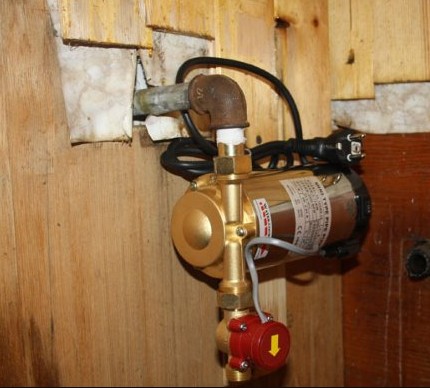
The main purpose of the relay is to independently turn off the pumping station with insufficient power of the fluid flow and turn on after normalizing the indicators.
Design and principle of operation
The sensor has a unique device, thanks to which it performs its immediate functions. The most common modification is the petal relay.
The classical structure diagram includes such important elements:
- an inlet pipe passing water through the device;
- a valve (lobe) located on the wall of the inner chamber;
- insulated reed switch, closing and opening the power supply circuit;
- springs of a certain diameter with varying degrees of compression.
While the chamber is being filled with liquid, the force of the flow begins to act on the valve, displacing it around the axis.
A magnet built into the back of the petal comes close to the reed switch. As a result, the contacts close, including the pump.
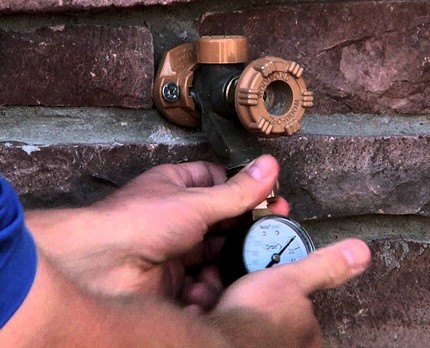
When the flow of fluid stops and the pressure in the system drops below normal, the compression of the spring weakens, returning the valve to its original position. Moving away, the magnetic element ceases to act, the contacts open and the pump station stops.
Some modifications are equipped with a return magnet instead of springs. Judging by user reviews, they are less susceptible to small pressure surges in the system.
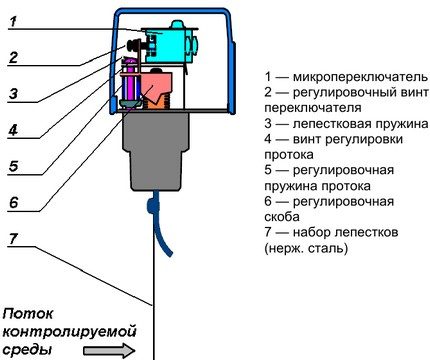
Depending on the design, several more types of relays are distinguished. These include rotary devices equipped with a paddle wheel rotating in the water stream. The speed of rotation of the blades in them is controlled by sensor sensors. In the presence of fluid in the pipe, the mechanism deviates, closing the contacts.
There is also a thermal relay that operates in accordance with thermodynamic principles. The device compares the temperature set on the sensors with the temperature of the working medium in the system.
If there is a flow, a thermal change is recorded, after which the mains contacts are connected to the pump. If there is no movement of water, the microswitch disconnects the contacts. Models thermal relays high sensitivity is characteristic, but they are quite expensive.
Instrument selection criteria
Choosing equipment that controls the strength of the water flow, you should carefully study its technical characteristics.
Particular attention should be paid to the range of operating temperature and pressure for which it is designed, the diameter of the thread and bore holes, protection class, application nuances. It is also important to clarify what materials the product is made of.
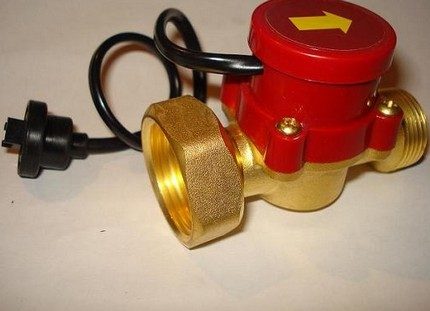
Considering various modifications of the relay, it makes sense to purchase an option made of metal. The case and working components of such devices are highly durable.
This fact allows the equipment to withstand severe loads arising in connection with significant pressure in the water supply on the liquid side passing through the sensor.
The pressure value at which the relay operates must correspond to the capacity of the installed pump. The parameters of the water flow circulating through the pipeline depend on this characteristic.
It is advisable to choose a device with two springs that controls the operation of the pumping station according to certain lower and upper pressure marks.
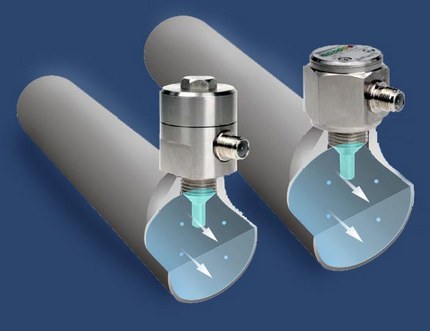
Another important criterion worth a separate mention is the climatic conditions necessary for the operation of the product. We are talking about the recommended air temperature and humidity level, which must be provided to the device so that it can work with the best performance.
The maximum permissible loads for a particular device are determined by the protection class specified in the technical specifications.
When buying a flow sensor, you should check the diameter of the thread cross-section and the dimensions of the mounting holes in the equipment: they should fit perfectly with the elements of the pipeline. The correctness and accuracy of further installation, as well as the efficiency of the relay after installation, depends on this.
Credible appliances
Among the entire assortment of relays, two models are in greatest demand, being in approximately the same price category - about $ 30. Consider their characteristics in more detail.
Genyo Lowara Genyo 8A
Development of a Polish company engaged in the production of electronic equipment for control systems. Designed for use in domestic water supply systems.

The main goal is to control the pump and control the pressure in the pipes during operation. This sensor starts the pump when the water flow exceeds 1.6 liters per minute. It consumes 2.4 kW of electricity. The range of operating temperatures is from 5 to 60 degrees.
Grundfos UPA 120
It is made at factories in Romania and in China. Maintains a stable water supply in rooms equipped with individual water supply systems. Prevents idling of pumping units.
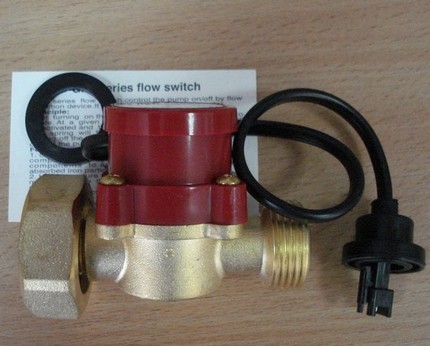
Automation of the device starts at a flow rate of 1.5 liters in one minute. The boundary parameter of the covered temperature range is 60 degrees. The unit is manufactured in compact linear dimensions, greatly facilitating the installation process.
Installation and configuration recommendations
Fluid flow relays are installed for devices that need constant control and compliance with a specific operating mode. Often they are equipped with equipment at the production stage. However, there are also circumstances when a separate sensor installation is needed.
Rules for installing the relay in the system
The installation of a safety device that determines the presence or absence of a water flow in the system is a reasonable step in cases where it is not possible to be continuously present during the operation of pumping equipment.
It will not be needed in only two cases:
- Water is pumped from a large well with unlimited resources by a low power pump.
- It seems possible to independently turn off the unit when the water level drops below the indicated norm.
The device is installed on horizontal sections of the pipeline. In this case, it is necessary to ensure that the membrane takes a stable vertical position.
The fixture is mounted to the drain pipe using a threaded sleeve. Usually, a special socket is provided for this.
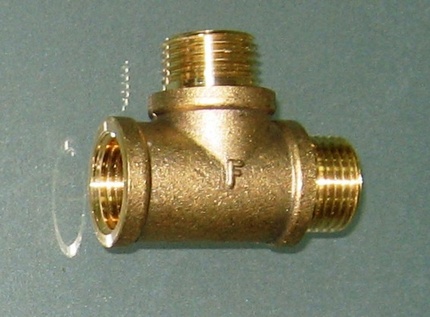
Before proceeding with the direct screwing of the device, it is advisable to seal the threads well with linen or thread, sold in specialized departments.
It is better to wind it clockwise towards the end. This method of attachment increases the reliability of fixation.
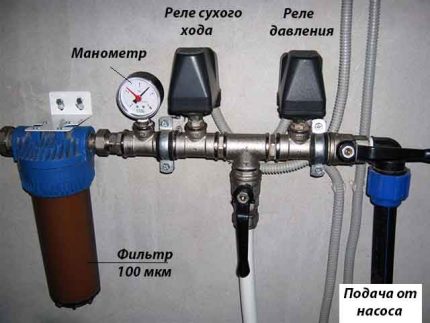
When installing the factory sensor, it is necessary to focus on the arrow depicted on the housing. The direction indicated on it should coincide with the direction of the flow of fluid passing through the device.
If contaminated water is transported through the pipeline, it is recommended to install cleaning filters by placing them near the sensor. Such a move will ensure the correct operation of the product.
At the final stage of installation work, the dry-running relay is connected to the electrical network:
- a wire core is screwed to the free ends of two groups of contacts;
- grounding is attached to the sensor screw;
- the device is connected to the pump by connecting the two devices with a conventional wire in compliance flowers lived.
After connecting to the network, the only thing left is to check the system’s operability. The fact that the device is ready for full operation will be indicated by an increase in pressure marks on the manometer and automatic shutdown of the pump at the moment of overcoming the limit value.
Self Adjustment Procedure
There are special screws in the sensor for regulation. By loosening or tightening them, you can reduce or increase the compression force of the spring.
Thus, the pressure level is set at which the device will operate.
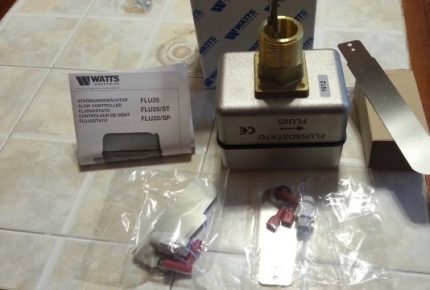
In most cases, setting up automatic equipment is straightforward.
It is advisable to stick to the following algorithm:
- drain the system until the pressure mark is zero;
- turn on the pump unit and slowly start the water back;
- fix the flow pressure indicator when the pump is turned off by the sensor;
- start draining again and remember the indicators at which the pumping equipment will begin to work;
- open the relay and adjust with an adjusting bolt the minimum compression level of the larger spring required to operate the device and start the pump (stronger compression increases the degree of pressure, less - reduces);
- in a similar way, adjust the compression force of the smaller spring mechanism by setting the maximum pressure limits at which the relay measuring the water flow will turn off the pump.
Having completed all the described manipulations, you should make sure that the adjustments made are correct. To do this, the pipeline is filled with liquid, and then drained, evaluating the response of the sensor while reaching the set values.
If the test result is unsatisfactory, the procedure is repeated.

In order for the pipeline through which the fluid passes to work properly and stably, a regular annual check of the flow sensors is carried out. If necessary, the adjustment of the operating parameters is adjusted.
Conclusions and useful video on the topic
The structure, components and principles of work:
The process of connecting the device in stages:
More details on how to adjust the response level in a relay:
The relay controlling the flow of water in the pipeline will significantly increase the usability of the pumps and will extend their service life for a long time. It is extremely undesirable to neglect the installation of a safety device, since it not only automates the operation of the equipment, but also protects it to the maximum from possible malfunctions that occur due to idling.
Do you want to install a flow switch yourself, but are a little confused in the instructions? Please ask your questions, and we and visitors to our site will try to help you.
Or maybe you have successfully completed the installation and configuration of the device and want to give useful recommendations to other beginners? Write your comments in the block below, add a photo of the installation or setup process - your experience will be useful to many home masters.

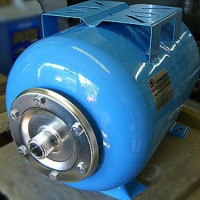 Hydraulic accumulator: device and principle of operation of a hydraulic tank in a water supply system
Hydraulic accumulator: device and principle of operation of a hydraulic tank in a water supply system 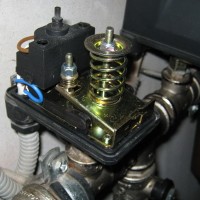 Adjusting the pressure switch for the accumulator: instructing on the equipment setup + expert advice
Adjusting the pressure switch for the accumulator: instructing on the equipment setup + expert advice 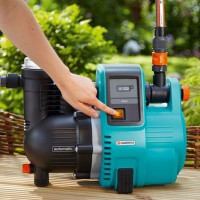 Self-priming pumps for water: types, principle of operation, recommendations for use
Self-priming pumps for water: types, principle of operation, recommendations for use 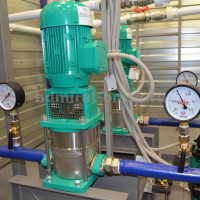 Principle of operation and design of a typical pumping station for water supply
Principle of operation and design of a typical pumping station for water supply 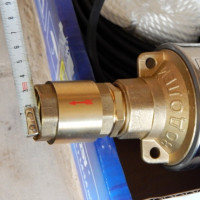 Check valve for the pump: device, types, principle of operation and installation details
Check valve for the pump: device, types, principle of operation and installation details 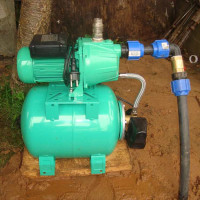 Ejector for a pumping station: operating principle, device, installation rules
Ejector for a pumping station: operating principle, device, installation rules  How much does it cost to connect gas to a private house: the price of organizing gas supply
How much does it cost to connect gas to a private house: the price of organizing gas supply  The best washing machines with dryer: model rating and customer tips
The best washing machines with dryer: model rating and customer tips  What is the color temperature of light and the nuances of choosing the temperature of the lamps to suit your needs
What is the color temperature of light and the nuances of choosing the temperature of the lamps to suit your needs  Replacement of a geyser in an apartment: replacement paperwork + basic norms and requirements
Replacement of a geyser in an apartment: replacement paperwork + basic norms and requirements
There is a well in the garden, a vibration pump "Typhoon" and a hose. So far I am thinking of adapting this only for watering. But what model to choose a flow switch, and is there really a need for it in this case at all? It is believed that the best option is a flap type relay with a reed switch? Or maybe it’s easier to buy a pump with a float switch and not complicate the whole thing?
We put the pump in the well and put a water flow switch near the pump in the house, although in principle the additional booster pump in the house has its own similar device. We think in vain, but decided that it would not hurt. There was no objection to the foreman who led the installation of our water supply and heating systems. Sewerage was earlier and it was made with us simply. Sewage is diverted directly to the sewer well.